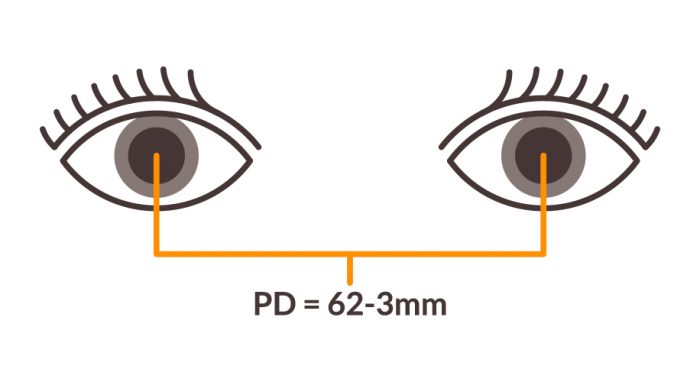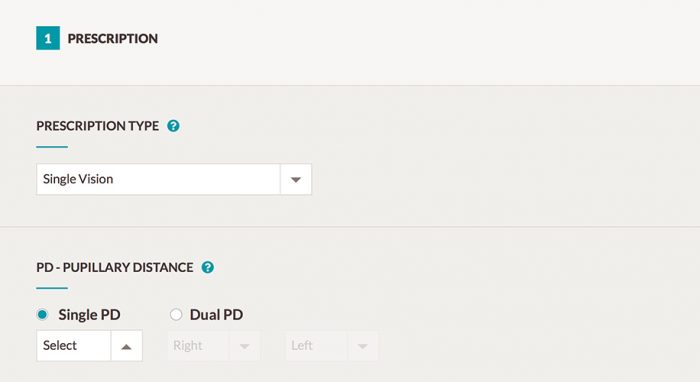The Case for Readers: Prescription vs Drugstore Reading Glasses
- BY Zenni Optical
- IN Eye Health

When it comes to reading glasses, most people make a trip to their local drugstore to pick up a pair of readers. While that solution is quick and easy, they aren’t always the best option for your eyes. So, what are the real benefits of ordering non-prescription reading glasses from Zenni versus wearing OTC readers you find in drug stores and department stores? Read on to find out.
Prescription Power
Reading glasses from a drugstore come in different strengths, also called powers, where both lenses are the same power. You will generally find them in ranges from +0.75 to +4.00. If you have the same power demand in each eye, readers can be a convenient fix. Yet many people require different strengths in each eye. It’s always best to have your eyes examined by a doctor to get the correct power for each eye. Your prescription may also call for an astigmatism correction, which OTC readers don’t address.
If your doctor does not give you a separate reading prescription at your eye exam, it’s easy to calculate yourself as long as you have your distance prescription with a noted “ADD” value. Simply add the “ADD” value to your distance “Sphere” (SPH) in each eye. This will be your new reading “Sphere” power in each eye. Your “Cylinder” (CYL) and “Axis” values will stay the same.
 Pupillary Distance
Pupillary Distance
Your pupillary distance (PD) is the measurement from the center of one pupil to the other. It essentially determines where the optical center should be placed on each lens. OTC readers have an average PD requirement of 60-63mm, but the average PD ranges anywhere between 57-65mm. If you’re looking through a pair of reading glasses that has a wider or narrower PD than yours, it will have a negative effect on your ability to see well, and ultimately lead to headaches, eyestrain, or double vision.
To order prescription reading glasses, you’ll need to know your near PD. To get your near PD, subtract 3mm from your distance PD. For example, if your distance PD is 63mm, then your near PD is 60mm. If you are using “Dual PD” to calculate near PD, then subtract 1.5mm from each eye’s measurement. For example, if your dual PD is 33/31mm then your near PD would be 31.5/29.5mm. If you don’t know your distance PD, you can ask your eye doctor for it or measure it yourself with our /measuring-pd-infographic”>helpful PD measurement guide.
Anti-Reflective Coating
OTC reading glasses don’t come with anti-reflective coating (ARC). So, is there really a difference between having it or not if you’re just wearing them to read? Simply put, yes. Not only does anti-reflective coating make your glasses easier to clean by preventing oil, water, and dirt from sticking to the lenses, it decreases the amount of light that reflects off the lens. This reduces eyestrain and improves vision, particularly in artificial light.
Blue Light Protection
In today’s digital age, the majority of our reading is done on a tablet, computer, or phone. As a result, we’re constantly exposing ourselves to unnatural blue light that can cause dry eye, eye fatigue, blurry vision, and disrupted sleep. That’s why a lens that blocks blue light is so important to the health of your eyes – and something you won’t get from OTC readers. Zenni’s Blokz blue blockers are virtually clear lenses made with a special blue-light-blocking polymer that prevents blue light and UV rays from passing through the lens.

How to Order Reading Glasses From Zenni
1. Find a frame you like and click “Order Glasses.”
2. In Step 1 at checkout, enter ‘Single Vision’ under prescription type.
3. Enter your Near PD as a Single or Dual.
4. Enter your reading prescription and then click “Submit Prescription.”
5. Add options, such as Blokz and anti-reflective coating.
6. Complete checkout!
With frames starting at $6.95, ordering reading glasses from Zenni is both good for your wallet and your eyes. Plus, with thousands of frames to choose from, you’ll never have to settle on just one style!